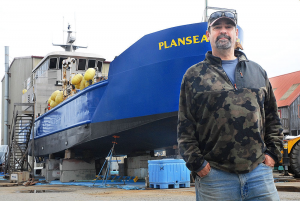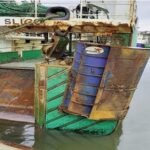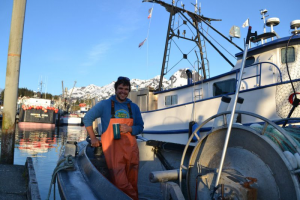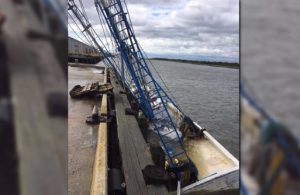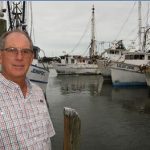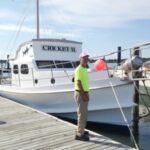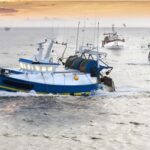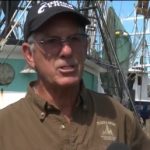Tag Archives: William & Mary’s Virginia Institute of Marine Science
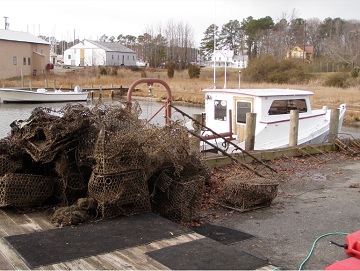
VIMS to lead national program for managing derelict fishing gear
The National Oceanic and Atmospheric Administration has recommended William & Mary’s Virginia Institute of Marine Science as home base for a new national program focused on protecting U.S. coastal waters from derelict fishing gear. The $8 million provided by NOAA to implement the four-year program is the largest single grant award in VIMS’ 83-year history. Many of these dollars will be passed on to program partners through an annual grant competition. Formally known as the Nationwide Fishing TRAP Program — “TRAP” for Trap Removal, Assessment & Prevention — the effort includes funding for commercial and tribal fishers to remove derelict pots from Virginia’s waters. >click to read< 17:46

Once in a blue moon: Crabber catches rare all-blue blue crab
Jim McInteer and his crew mate Alan Payne knew they had captured an oddity the moment they pulled their crab pot from the York River last Tuesday. “We were excited about it,” says McInteer. “Alan yelled, ‘Come look at this crab!’ He very carefully took him out of the pot and then I could see exactly what it was — I’d read about how they occur every now and then, so we knew what we had.” McInteer, who at 73 has been crabbing commercially for 10 years and recreationally for decades, says he’s caught blue crabs “with blotches of white, and some other slight discolorations, but never a solid-blue blue crab.”Recognizing its rarity, they donated it to the laboratory of Professor Rom Lipcius, an expert in crustacean ecology at William & Mary’s Virginia Institute of Marine Science. >click to read<16:19
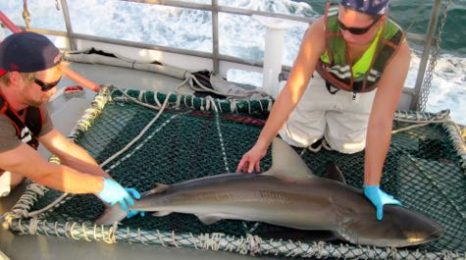
Coastal shark population on rise in southeast U.S, Gulf of Mexico
A recent analysis of population trends among coastal sharks of the southeast U.S. shows that all but one of the seven species studied are increasing in abundance. The gains follow an enactment of fishing regulations in the early 1990s after decades of declining shark numbers. Scientists estimate that over-fishing of sharks along the southeast U.S. coast—which began in earnest following the release of Jaws in 1975 and continued through the 1980s—had reduced populations by 60-99 percent compared to unfished levels.,, The researchers say their study—based on modeling of combined data from six different scientific surveys conducted along the US East Coast and in the Gulf of Mexico between 1975 and 2014—provides a more accurate and optimistic outlook than previous studies based on commercial fishery landings or surveys in a single location. Read the article here 11:00
VIMS earns $6M in set-aside funding for scallop research
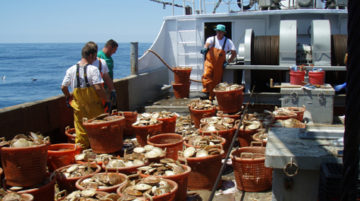 Researchers at William & Mary’s Virginia Institute of Marine Science have earned nearly $6 million in set-aside funding to advance the understanding and management of sea scallops off the U.S. East Coast. These tasty bivalves support one of the nation’s highest-valued commercial fisheries. Announced by NOAA’s Northeast Fisheries Science Center and the New England Fishery Management Council, the awards to VIMS account for six of the 15 research projects funded. Senior Research Scientist David Rudders is lead investigator on five of the six VIMS projects and a co-lead on the other one. Support for the projects comes from the 2016 Sea Scallop Research Set-Aside (RSA) program, Read the rest here 10:06
Researchers at William & Mary’s Virginia Institute of Marine Science have earned nearly $6 million in set-aside funding to advance the understanding and management of sea scallops off the U.S. East Coast. These tasty bivalves support one of the nation’s highest-valued commercial fisheries. Announced by NOAA’s Northeast Fisheries Science Center and the New England Fishery Management Council, the awards to VIMS account for six of the 15 research projects funded. Senior Research Scientist David Rudders is lead investigator on five of the six VIMS projects and a co-lead on the other one. Support for the projects comes from the 2016 Sea Scallop Research Set-Aside (RSA) program, Read the rest here 10:06

































